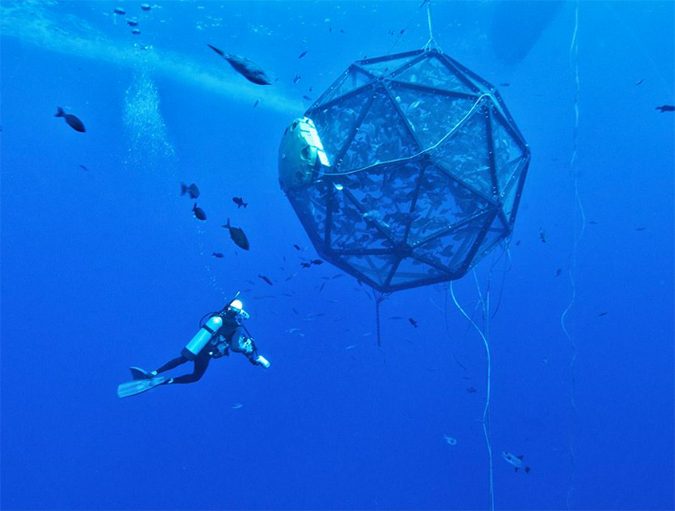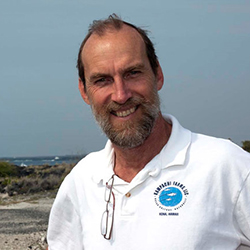Responding to an article published by The Hill, Ocean Stewards Institute and CUSP argue aquaculture is the future

Editor’s Note: The following was originally published in The Hill’s Congress blog. To see the original article, published on Oct. 31, please click here.
America needs another revolution. We need a Blue Revolution, to start to grow fish in the open ocean, where they belong. And we should lead the world in this initiative. This is an economic opportunity: we must reverse our $12.9 billion seafood trade deficit. We have the technologies, we have the investment capital, and we need the jobs and the working waterfronts. It is also a moral obligation: Over 90 percent of the seafood consumed in the United States is imported. America controls the largest ocean expanse of any nation on earth, yet we import more seafood – by dollar value – than any other country. This means that if we quash the development of aquaculture in the United States, then we are simply exporting the environmental footprint to other countries, where environmental standards may be more lax.
Leading conservation groups such as World Wildlife Fund, Conservation International and Ocean Conservancy now recognize the global imperative for expansion of aquaculture, and are actively working to encourage best practices. Yet Marianne Cufone, of the Recirculating Farms Coalition, (The Hill, October 17, 2016, 01:40 pm) asserts that the “Feds must end push for ocean aquaculture.”
Cufone and her fellow anti-aquaculture activists cling tenaciously to data that is two or three decades old, or cite no data at all, to support their position. This continues the pattern of deliberate distortion and misrepresentation of the impacts of ocean culture on the environment. Growing this industry is vitally important for the health of the planet, for the health of the oceans, and for the health of American consumers. Consider, please:
Planetary health: A 2012 study by Conservation International, titled ‘Blue Frontiers’, conducted a full Life-Cycle Analysis of all water, land and feed resource use, and impacts on greenhouse gas emissions, and concluded that aquaculture was, far and away, the least impactful of all animal protein production systems. [1] We should therefore be growing more seafood to meet the increased demand for proteins. If the 3 billion people that are projected to rise into the middle class by 2050 are eating farmed fish, then the prospects for managing global climate change, and our other ecological challenges, are far brighter.
Ocean health: Ocean aquaculture is beneficial for our oceans, as it reduces the fishing pressure on wild stocks and can be a source for stock enhancement. The assertions by Cufone that net pen culture is detrimental to the marine environment have been soundly refuted by two recent studies: the first, by National Ocean Service researchers, evaluated the impact of net pen culture on water quality and surrounding substrates.[2] They concluded that as long as the water depth is at least twice the depth of the net pens used in the production system, and the currents in the area are moderate (over 0.25 knots), there is no significant detriment on the water quality or the benthic community, at any distance away from the net pens, and that there is often no measureable impact whatsoever.
The second study, by scientists at the National Marine Fisheries Service, reviewed an extensive set of data on marine net pen operations throughout U.S. state waters, and concluded that if regulations and Best Management Practices are adhered to, there is no significant impact from operations on other marine biota, including marine mammals and other charismatic megafauna, nor any significant impact from transfer of diseases to wild stocks, nor of escapees impacting wild stock genetics or wild food chains.[3] In short, so long as net pens are sited correctly, and are operated in accordance with accepted Best Management Practices, open ocean aquaculture operations are environmentally benign, or even beneficial.
Consumer health: The preponderance of scientific evidence – and the recent official recommendations by the FDA – assert that Americans need to be eating more seafood.[4] Yet consumer fears about the risks of seafood have led to a decrease in per capita seafood consumption in the U.S. over the last decade. The definitive meta-study of the risks and benefits of seafood consumption concluded that if Americans would double their seafood consumption (to two meals of oily fish per week), there would be a 35 percent reduction in heart disease, and a 17 percent reduction in overall mortality.[5] This conclusion should rank alongside seatbelts and smoking as a public health policy priority. It implies that those activists who would – consciously or otherwise – attempt to dissuade Americans from eating more seafood are showing a callous disregard for science, and for people’s lives.
The Magnuson-Stevens Fishery Management and Conservation Act has proven its effectiveness in the rebuilding of U.S. fishery stocks[6]. It can provide similar effective oversight for a growing aquaculture industry. The FMP for the GoM was developed over a 12 year period that included five public comment periods, and two state regulatory consistency reviews by five Gulf states, under the authority of the Coastal Zone Management Act. Alongside permits under the FMP, applicants will require permits and oversight by the U.S. Environmental Protection Agency, U.S. Army Corps of Engineers and the U.S. Coast Guard. Projects must also be consistent with State Coastal Zone Management Plans[7].
NOAA therefore needs to continue to expand the opportunities for aquaculture development in U.S. Federal waters, beyond the Gulf of Mexico and the Western Pacific regions. This is a pressing imperative. There is no sound scientific reason for delay. The only arguments against such an expansion are baseless “what ifs” and fretful hand wringing.
We all need to be eating more American-grown seafood!
***
Footnotes:
[1] Hall, S.J., A. Delaporte, M. J. Phillips, M. Beveridge and M. O’Keefe. 2011. Blue Frontiers: Managing the Environmental Costs of Aquaculture. The WorldFish Center, Penang, Malaysia. 104 pp. (Available at www.conservation.org/marine)
[2] Price, C.S., and J.A. Morris, Jr (2013) Marine Cage Culture and the Environment. NOAA Technical Memorandum NOS NCCOS 164. 172 pp. (Available at: http://www.noaanews.noaa.gov/stories2013/pdfs/2013_PriceandMorris_MarineCageCultureandTheEnvironment%285%29.pdf)
[3] Rust, Michael B., Kevin H. Amos, April L. Bagwill, Walton W. Dickhoff, Lorenzo M. Juarez, Carol S. Price, James A. Morris Jr. & Michael C. Rubino (2014) Environmental Performance of Marine Net-Pen Aquaculture in the United States, Fisheries, 39:11, 508-524, DOI:10.1080/03632415.2014.966818. (Available at: http://dx.doi.org/10.1080/03632415.2014.966818)
[4] Food and Drug Administration. “Fish: What Pregnant Women and Parents Should Know”. Draft Updated Advice by FDA and EPA. Available at: http://www.fda.gov/food/foodborneillnesscontaminants/metals/ucm393070.htm
[5] Mozaffarian, Dariush, and Eric B. Rimm, “Fish Intake, Contaminants, and Human Health. Evaluating the Risks and the Benefits”, Journal of the American Medical Association, 2006, vol. 296, pp 1885-1899.
[6] See Report to Congress, Status of Stocks: 2015 http://www.nmfs.noaa.gov/sfa/fisheries_eco/status_of_fisheries/archive/2015/2015_status_of_stocks_updated.pdf.
[7] Details on these regulatory and permit requirements are available at: http://sero.nmfs.noaa.gov/sustainable_fisheries/gulf_fisheries/aquaculture/ which includes the Plan, permit application guide and information concerning certification of broodstock and juveniles, baseline environmental survey, assurance bond, and genetic requirements.
Authors
-

Neil Anthony Sims, M.Sc.
Ocean Stewards Institute
[109,111,99,46,109,114,97,102,105,104,99,97,112,109,97,107,64,108,105,101,110]
-
Bridget Owen
Coalition for U.S. Seafood Production (CUSP)
[109,111,99,46,101,99,110,97,105,108,108,97,97,117,113,97,121,111,115,64,110,101,119,111,98]


